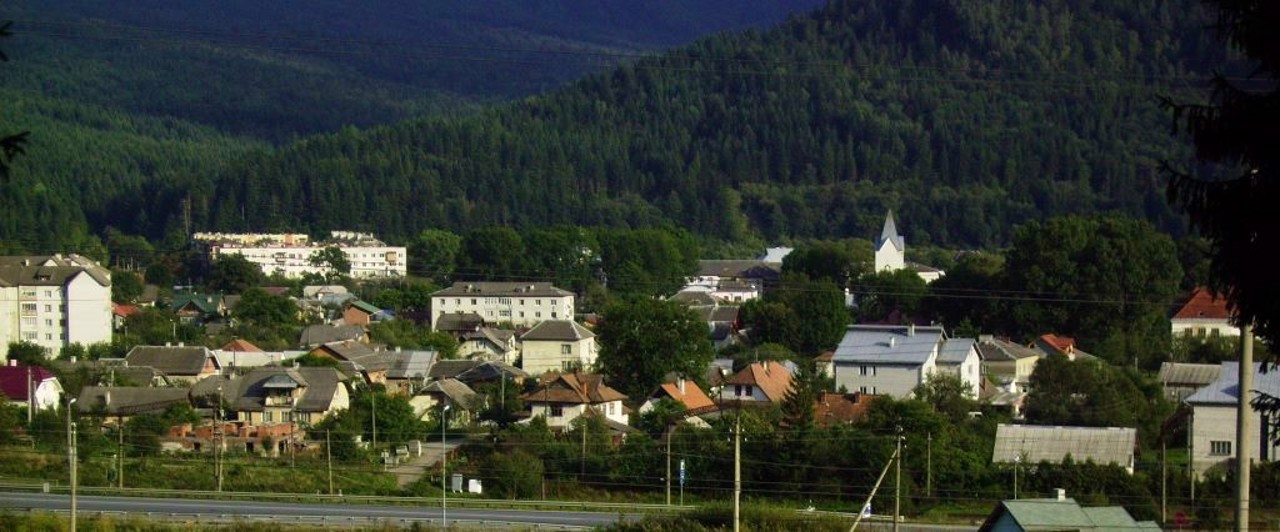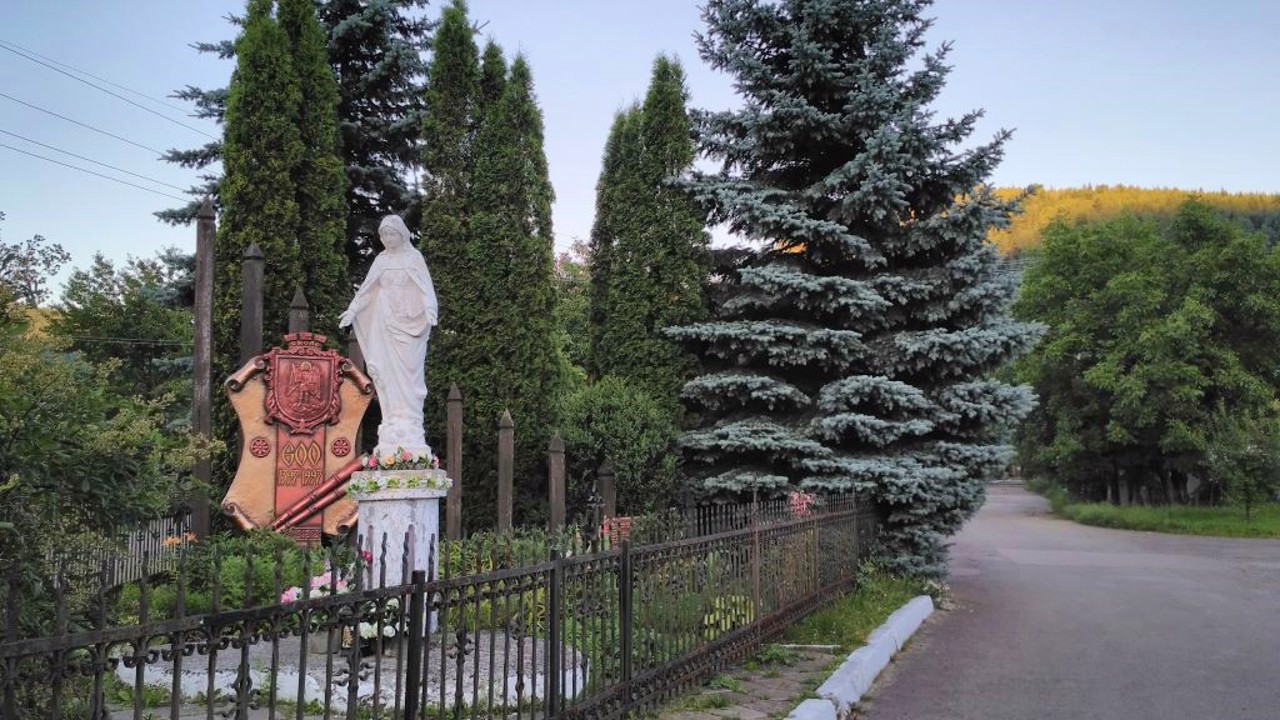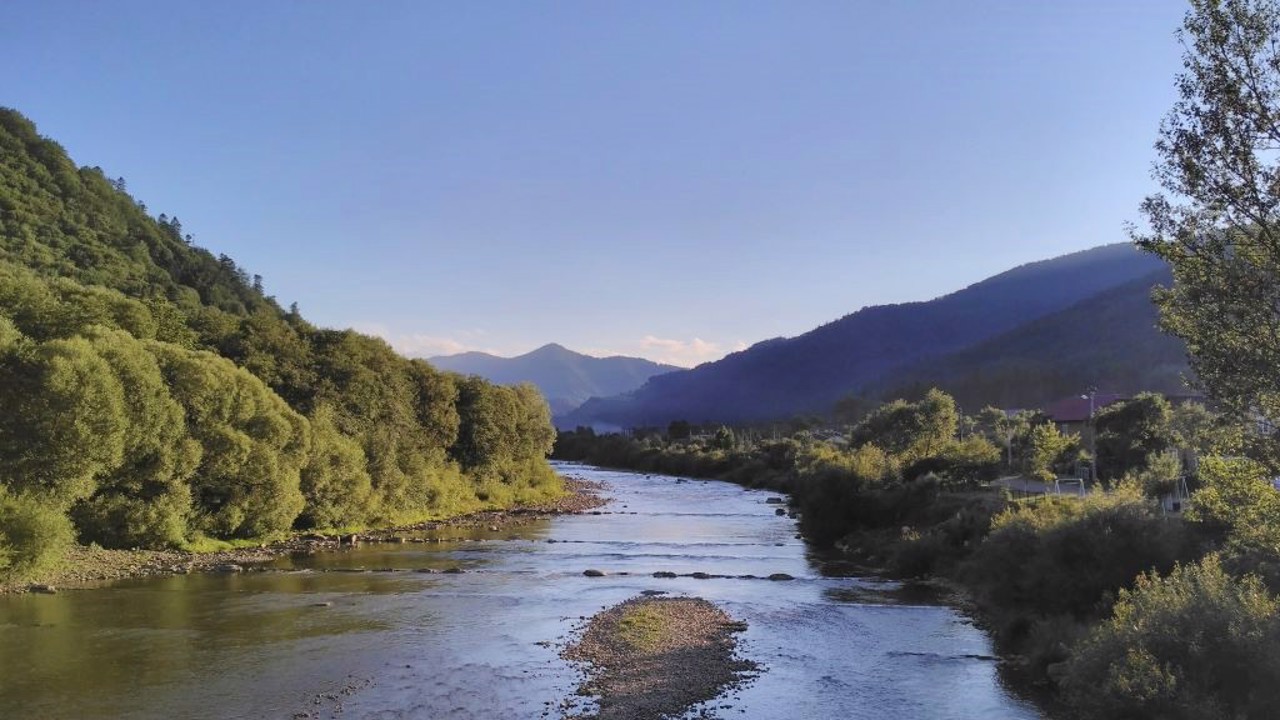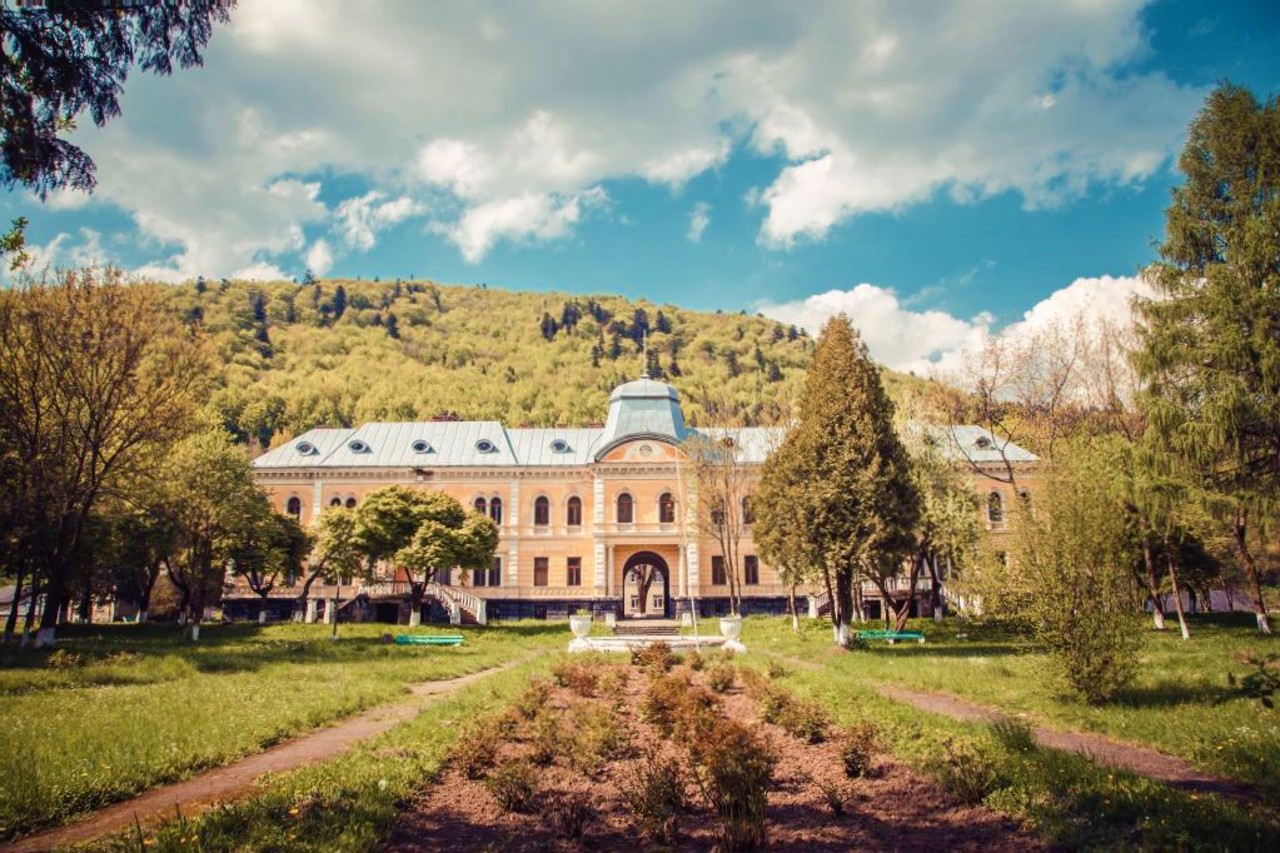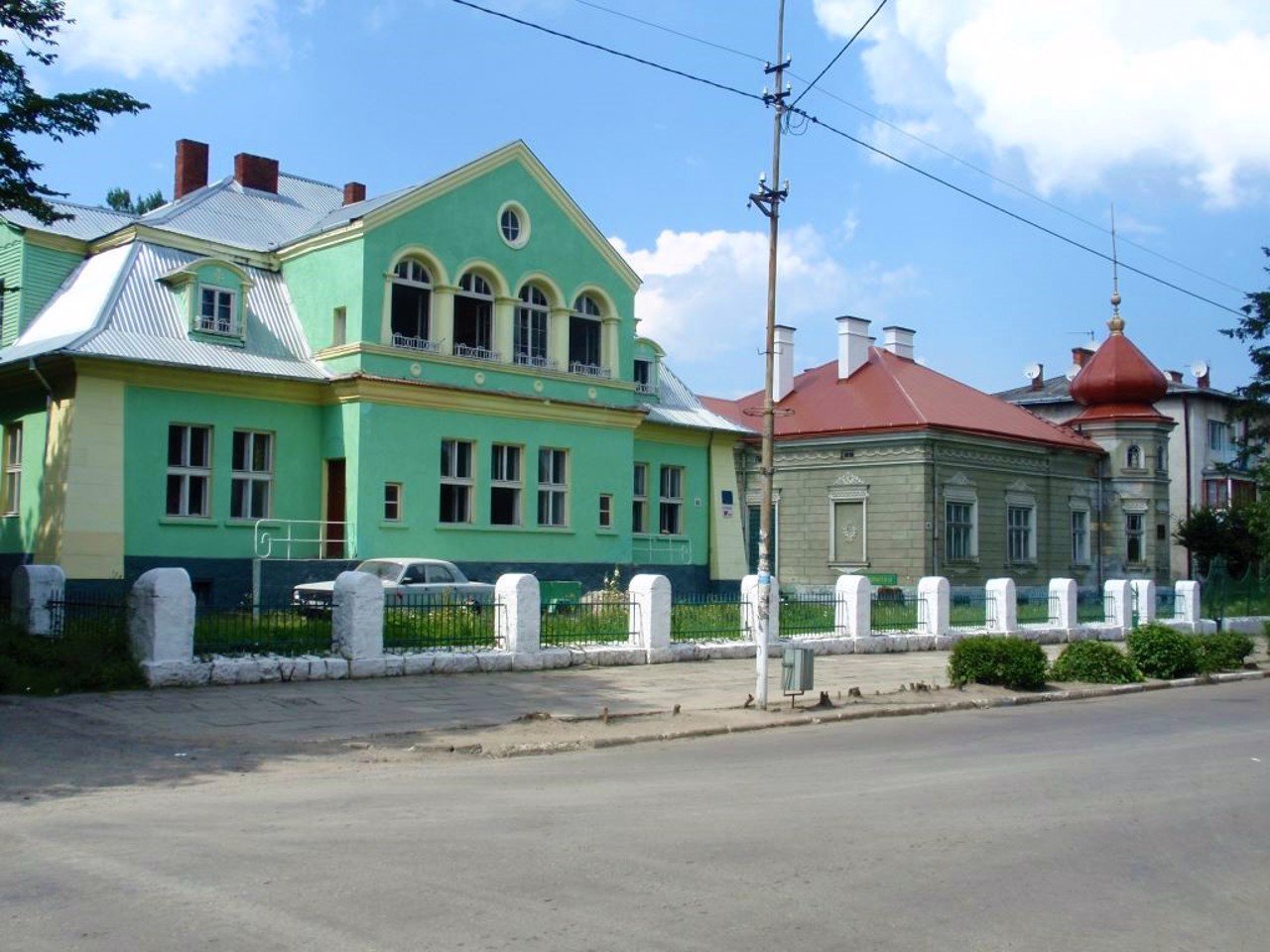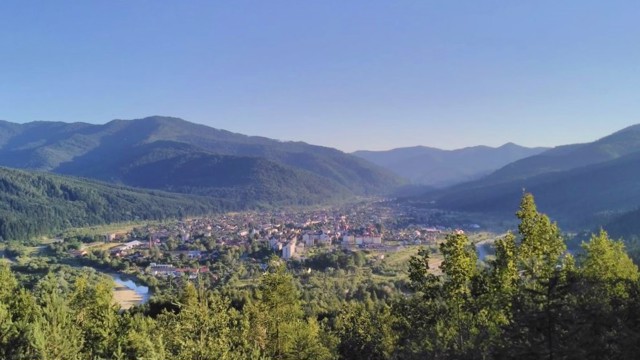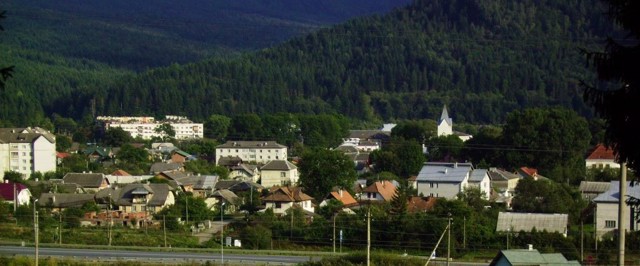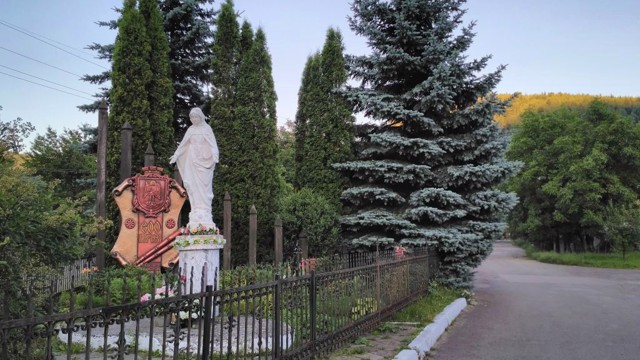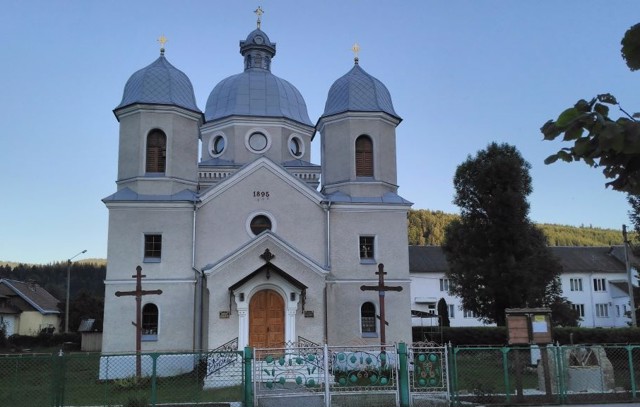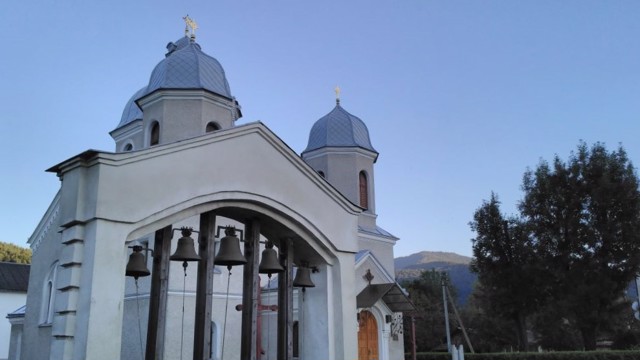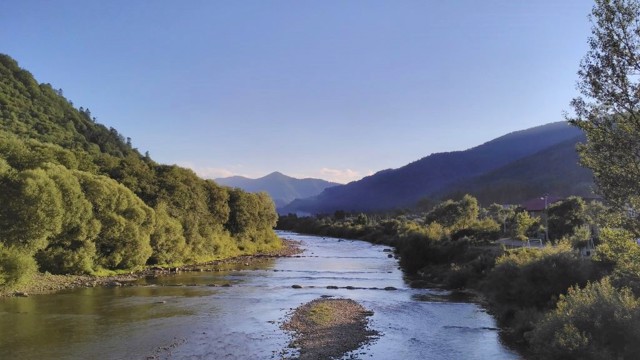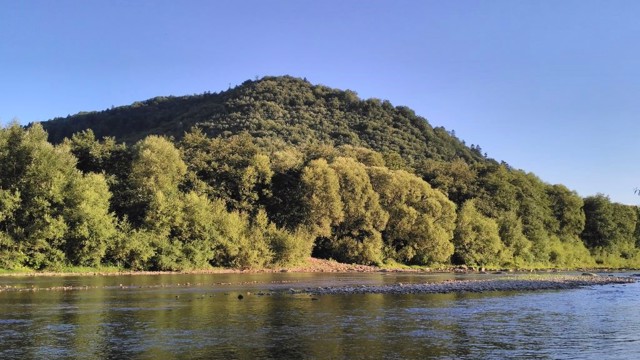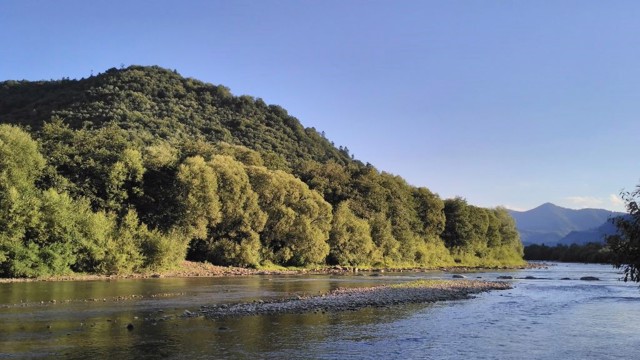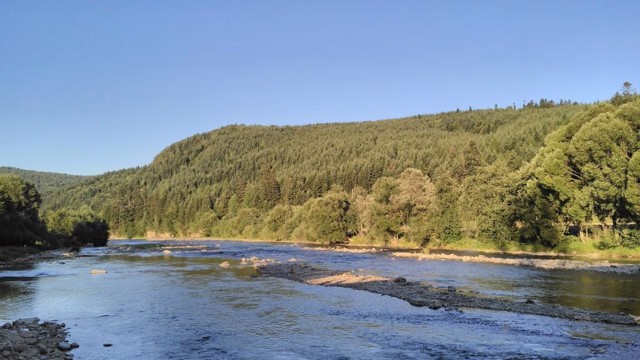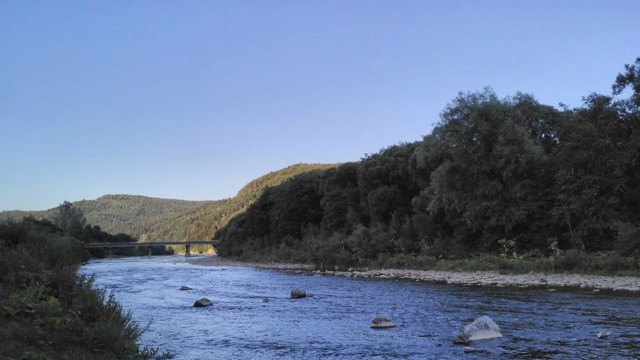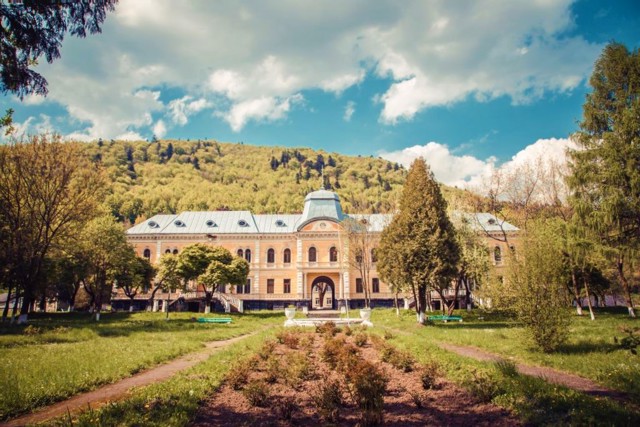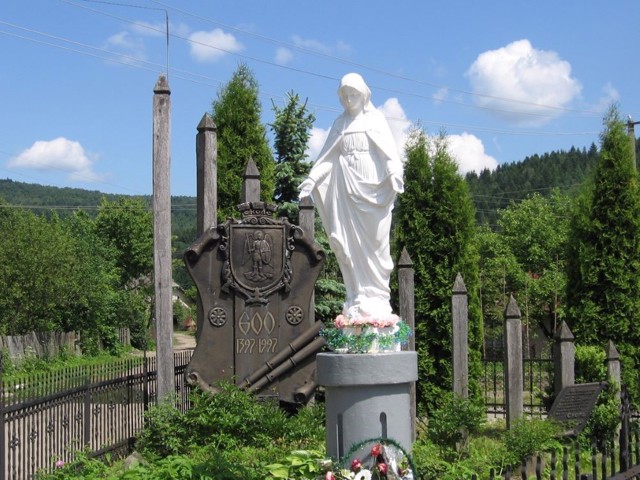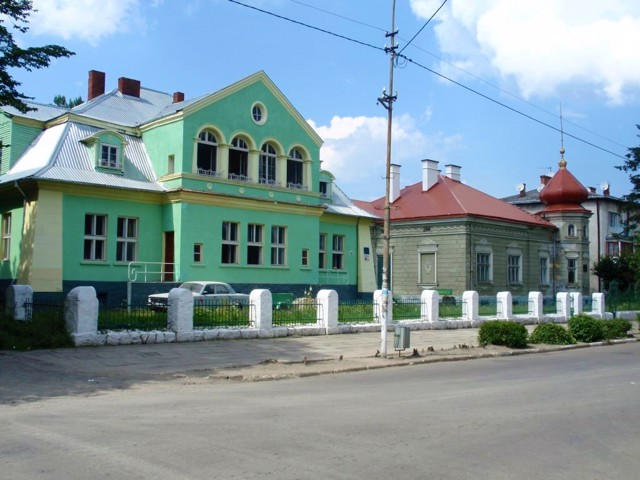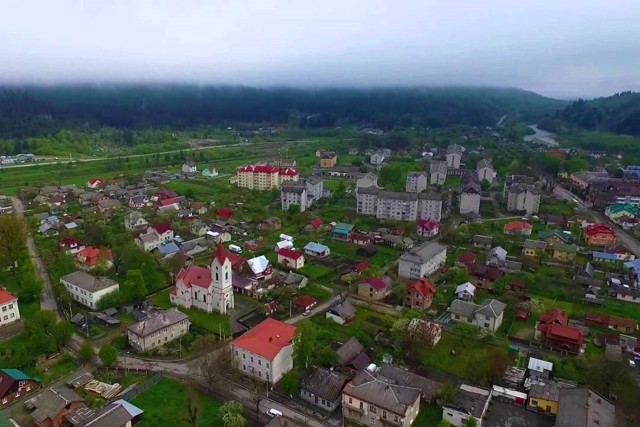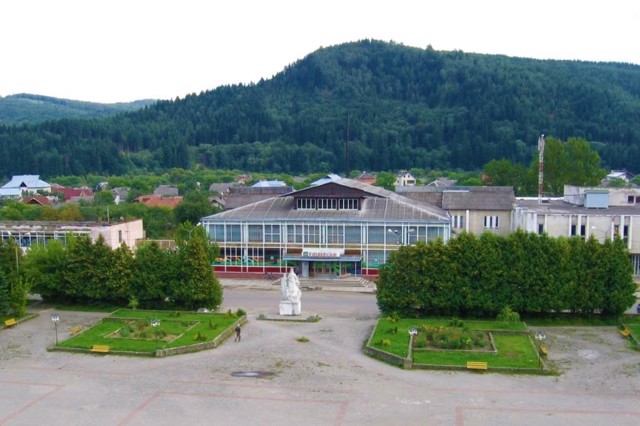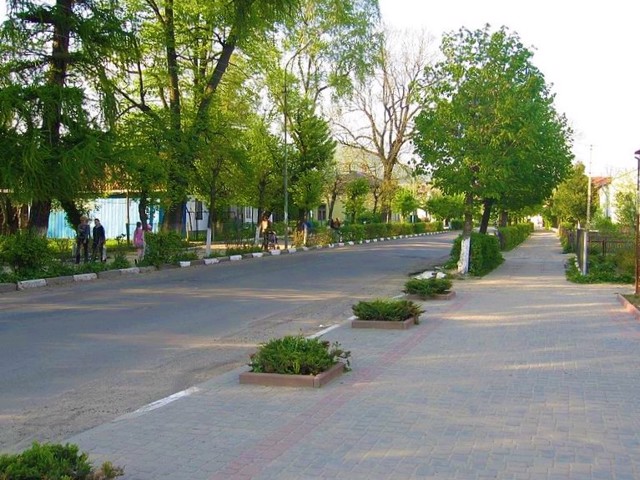Functional temporarily unavailable
General information about Skole
City Skole on the river Opir in the foothills of the Carpathians is located on the highway E-50 (M-06) "Kiev - Chop".
The city Skole was first mentioned in 1397, but it existed before. According to legend, in 1015 a battle took place here between the sons of the Kiev prince Vladimir Svyatoslavych - Svyatopolk and Svyatoslav (allegedly, the victorious Svyatopolk in the battle demanded to finish off the defeated: "Knock them off!", Hence the name).
The wooden church of St. Paraskeva with a bell tower was built in the 17th century. folk craftsmen of the Boyko school. In the XVIII century.
German colonists-miners invited by the landowner I. Lubomirskaya built the first blast furnace in the village of Demnya.
In the middle of the 19th century, the ...
City Skole on the river Opir in the foothills of the Carpathians is located on the highway E-50 (M-06) "Kiev - Chop".
The city Skole was first mentioned in 1397, but it existed before. According to legend, in 1015 a battle took place here between the sons of the Kiev prince Vladimir Svyatoslavych - Svyatopolk and Svyatoslav (allegedly, the victorious Svyatopolk in the battle demanded to finish off the defeated: "Knock them off!", Hence the name).
The wooden church of St. Paraskeva with a bell tower was built in the 17th century. folk craftsmen of the Boyko school. In the XVIII century.
German colonists-miners invited by the landowner I. Lubomirskaya built the first blast furnace in the village of Demnya.
In the middle of the 19th century, the new owner of the estate, Count Kaminsky, built a palace and laid out a park, which have survived to this day.
In the beginning. XX century, under the barons Hredels, industry was actively developing in the city, and then the resort infrastructure: hotels, villas, a toboggan run.
National Nature Park "Skolivski Beskydy" was created in 1999 on the basis of forest massifs in combination with mid-mountain landscapes. The Kamyanka Waterfall natural monument is located 7 kilometers from Skole, upstream of the Kamyanka River..
Місто Сколе на березі річки Опір в передгір'ях Карпат розташоване на трасі Е-50 (М-06) "Київ - Чоп".
Вперше Сколе згадується у 1397 році, проте воно існувало і раніше. За легендою, в 1015 році тут сталася битва між синами київського князя Володимира Святославича - Святополком і Святославом (нібито, Святополк, який переміг в бою, вимагав добити переможених: "Сколите їх!", звідки і пішла назва).
Дерев'яна церква Святої Параскеви з дзвіницею побудована в XVII столітті народними майстрами бойківської школи.
У XVIII столітті запрошені поміщицею Ізабеллою Любомирською німецькі колоністи-гірники побудували в присілку Демня першу доменну піч.
В середині XIX століття новий власник маєтку граф Камінскі збудував палац і заклав парк, які збер ...
Місто Сколе на березі річки Опір в передгір'ях Карпат розташоване на трасі Е-50 (М-06) "Київ - Чоп".
Вперше Сколе згадується у 1397 році, проте воно існувало і раніше. За легендою, в 1015 році тут сталася битва між синами київського князя Володимира Святославича - Святополком і Святославом (нібито, Святополк, який переміг в бою, вимагав добити переможених: "Сколите їх!", звідки і пішла назва).
Дерев'яна церква Святої Параскеви з дзвіницею побудована в XVII столітті народними майстрами бойківської школи.
У XVIII столітті запрошені поміщицею Ізабеллою Любомирською німецькі колоністи-гірники побудували в присілку Демня першу доменну піч.
В середині XIX століття новий власник маєтку граф Камінскі збудував палац і заклав парк, які збереглись до сьогодні.
На початку XX століття, при баронах Гределях, в місті активно розвивалася промисловість, а потім і курортна інфраструктура: готелі, вілли, санна траса.
Національний природний парк "Сколівські Бескиди" створений в 1999 році на базі лісових масивів в поєднанні з середньогірськими ландшафтами. Пам'ятник природи Кам'янецький водоспад знаходиться в 7 кілометрах від Сколе, вище за течією річки Кам'янка.
Сплануй своє перебування у Skole
What to see and where to go in Skole
Tourist attractions and museums of Skole

Gredel's Palace
Palace / manor , Architecture
The palace and park in Skole were founded by Baron Yevheniush Kaminski in the middle of the 19th century, after he bought the Skole lands from his friend, Count Potocki.
At the end of the 19th century, the palace was rebuilt in the neo-baroque style by the Austrian baron Hermann Gredel and his brothers Bernard and Albert, who controlled the local industry.
The Gredel's palace is located in the upper part of the city (Demnya district), next to the highway "Kyiv - Chop". The building is well preserved, but without interior decoration. A park with a fountain in front of the main facade is surrounded by an authentic fence.
Until 1956, the district branch of the NKVD was located here. Today it is a boarding school.
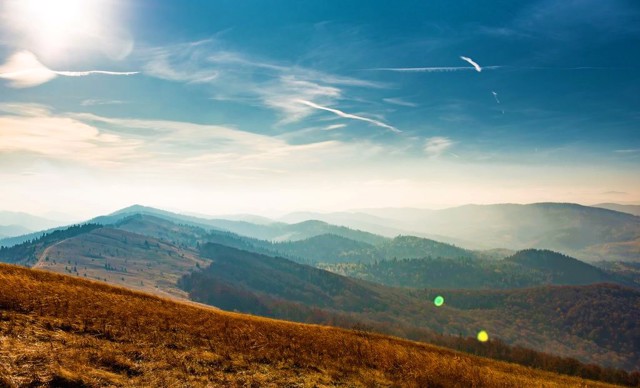
Skolivski Beskydy National Nature Park
Natural object , Reserve
The National Nature Park "Skolivski Beskydy" protects the unique nature of the northeastern part of the Ukrainian Carpathians.
The park with an area of more than 35,000 hectares was created in 1999 on the basis of the Skole Forest Reserve, declared here in 1983 for the purpose of protecting beech forests, as well as part of the territory of the Zelemin and Maidan landscape reserves, the protected tracts of Dubynske, Sopot , "Zhuravlyne".
The Skolivski Beskydy mountain massif is located between the Stryi, Opir and Myzunka rivers. The absolute heights in the territory of the park are from 600 to 1200 meters. Pure beech forests of natural origin have been preserved here, as well as reference spruce and fir forests (the trees are over 100 years old). Deer, roe deer, wild boar, wolves, bears, and if from rare species - badger, ermine, forest cat, lynx and others are found in them. In 1965, 10 bison were brought here from Bilovezshska Pushcha.
On the territory of the National Park "Skolivski Beskydy" there are such well-known natural attractions as the waterfalls "Kamyanka" (the village of Kamianka) and "Hurkalo" (the village of Korchyn), as well as the historical and cultural reserve "Tustan" (the village of Urych ).
Directly adjacent to the city of Skole is the protected tract "Pavliv Potik", in which there are two small waterfalls, sources of mineral water, Blackberry meadow.
Tents and bonfires are allowed in designated areas.
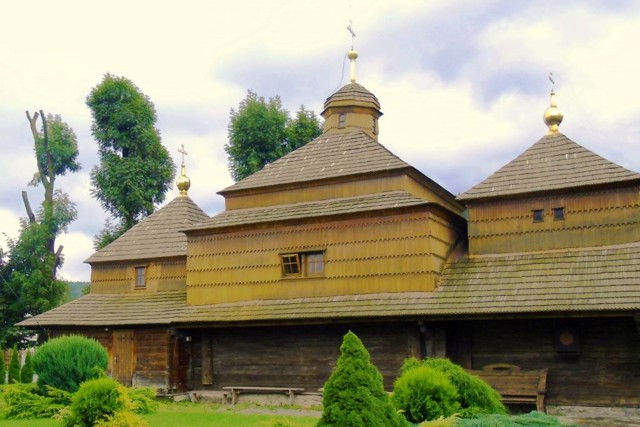
Saint Panteleimon Church
Architecture , Temple
The wooden church of the Holy Great Martyr Panteleymon in Skole is said to have been founded in 1597 as the church of Saint Paraskeva. It is part of the "original Carpathian trinity" (churches in Skole, Verkhnia Rozhanka and Isai).
Built by masters of the Boykyv school, three square log cabins are covered with four-sided tents. A special feature of the church's architecture is the two-tier solution of the babinets, which has a frame structure at the top of the walls, which brings it closer to some landmarks of the Boykyv type in Transcarpathia.
The square two-story bell tower was added in 1760.
During the Soviet rule, a museum of folk architecture was opened in the premises of the Saint Panteleimon Church.
Today it is an active church of the Ukrainian Greek Catholic Church.
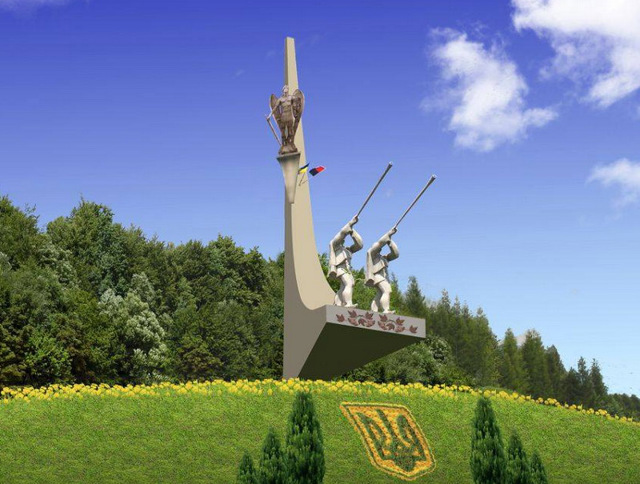
Boyko Trembitars Monument
Monument
The monument to the Boyko Trembitars was erected in 1985 at the entrance to the town of Skole in the "Kolodka" tract on the "Tukholski Vorota" pass in the Skolivsky Beskids.
A sculptural composition in the form of a stele, at the foot of which are two trumpeter boys, is installed above the M-06 highway "Kyiv - Chop".
At the time of its opening, the monument was dedicated to the liberation of Skole from the German-fascist occupation. A figure of a Soviet soldier was installed on the ceiling. In 2016, the monument was restored, the fallen figure was replaced by a sculpture of Archstrategist Mykhaylo.
A recreation area "Kolodka" has been arranged near the monument.
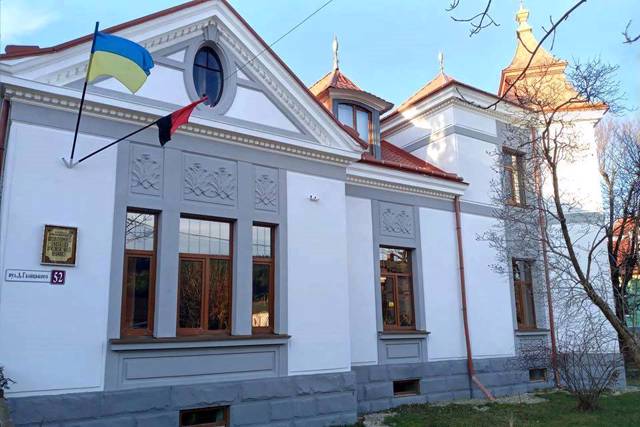
Historical and Local Lore Museum "Skolivshchyna"
Architecture , Museum / gallery
Since 2018, the Historical and Local Lore Museum "Skolivshchyna" has been housed in 12 halls of an elegant two-story villa, built at the beginning of the 20th century, when industry and recreation were actively developing in Skole.
In the first room, objects of the Boykos forestry industry, agricultural remnants, household items of the highlanders, and folk crafts are collected. In the next hall, the interior of a Boykos hut is recreated with traditional household items and figures of the landlord and the landlord in national dress. The development of the school industry in the 19th and 20th centuries is told by photos and things of local entrepreneurs of the Baron Groedl.
Next, military paraphernalia and rarities from the times of the two world wars and the modern Russian-Ukrainian war are presented. In the sacred art hall, an iconostasis from the Church of the Nativity of the Holy Virgin in Skole and a shroud from 1895 are exhibited.
You can also visit the stylized light house of Zakhar Berkut, the reconstruction of the UPA hideout, the NKVD interrogation room and the prison.
Reviews Skole
Geographical information about Skole
| {{itemKey}} | {{itemValue}} |
|---|---|
| Region |
Lviv |

